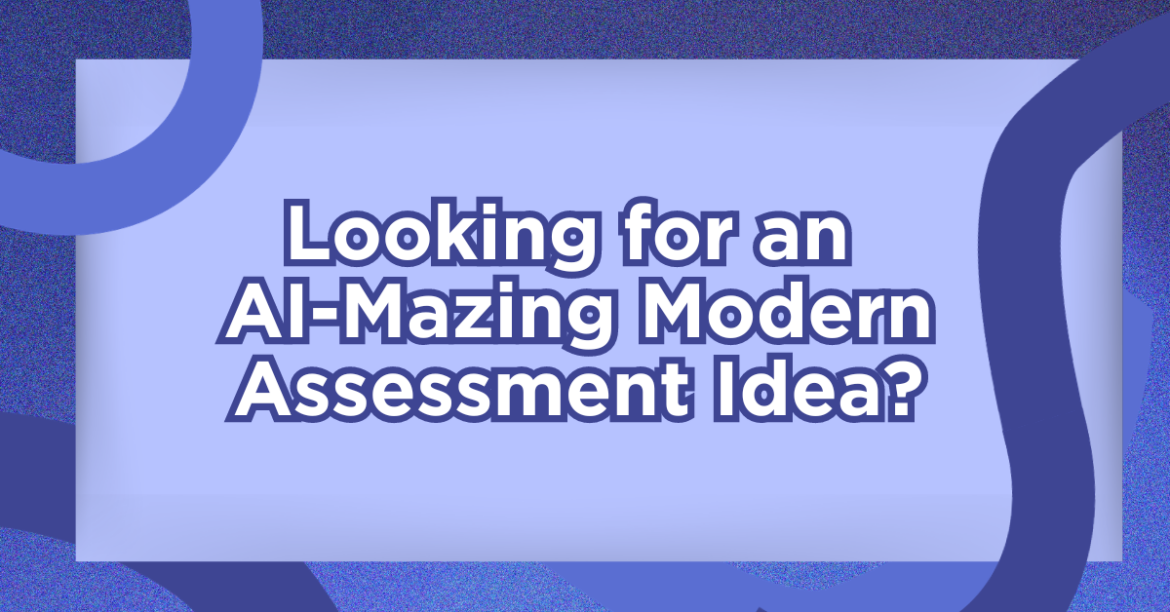How do I assess learning when generative AI can complete traditional assessments with a high level of accuracy? This seems to be on every educator’s mind, for good reason. I propose one solution: modern assessments!
What Is Modern Assessment?
Modern assessments exhibit the following key characteristics. They are formative or summative assessments of learning that:
- Appeal to the students’ world of instant answers, rapidly evolving technologies, and sharing with authentic audiences via social media
- Bring what students do in their spare time into the classroom
- Purposefully amplify the human advantage by focusing on synthesizing information and using it to create visual, multimedia products
- Allow for collaboration with AI (and/or fellow learners) but cannot be completed fully by AI
By requiring students to create, think critically, and problem solve, modern assessments are AI copy-and-paste-proof!
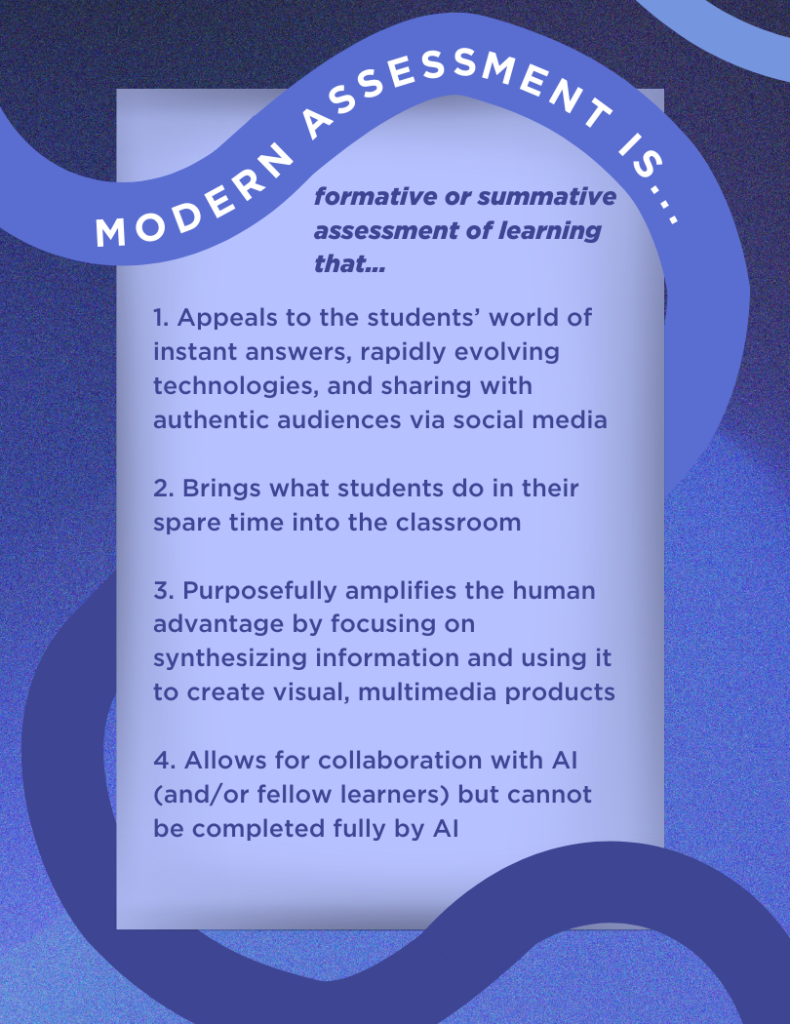
Example Modern Assessment: Snaps
Explain in a series of Snaps or a Snapchat video what characteristics identify art from the Impressionist movement. You must:
- Provide at least three examples of Impressionist art. Use these three examples to identify the characteristics described. Use annotation to specifically point out these characteristics.
- Use an AI image generator to create an example of Impressionist art exemplifying the characteristics of Impressionism. Explain how your AI-generated image exemplifies these characteristics. Make sure to label the AI-generated image appropriately.
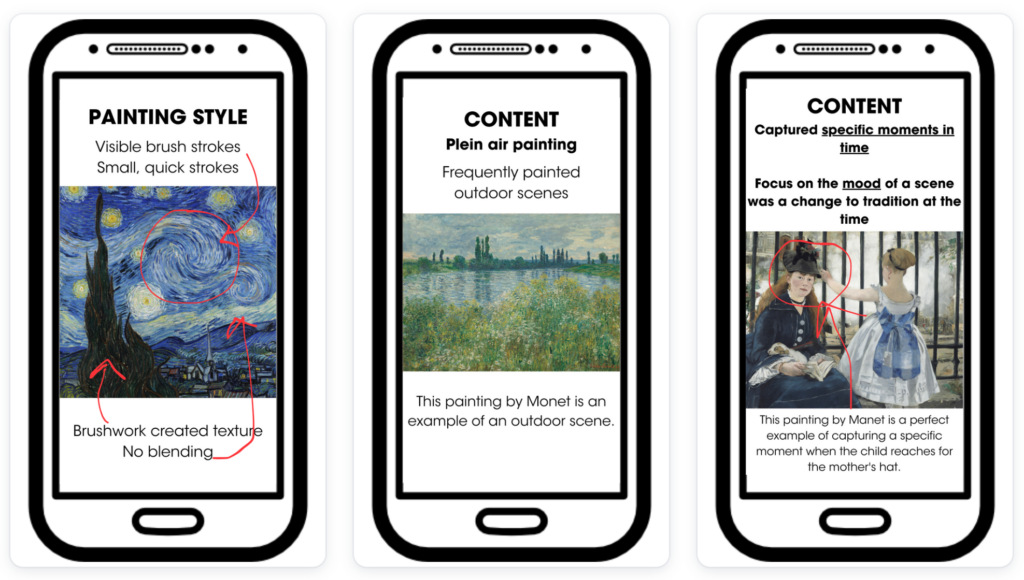
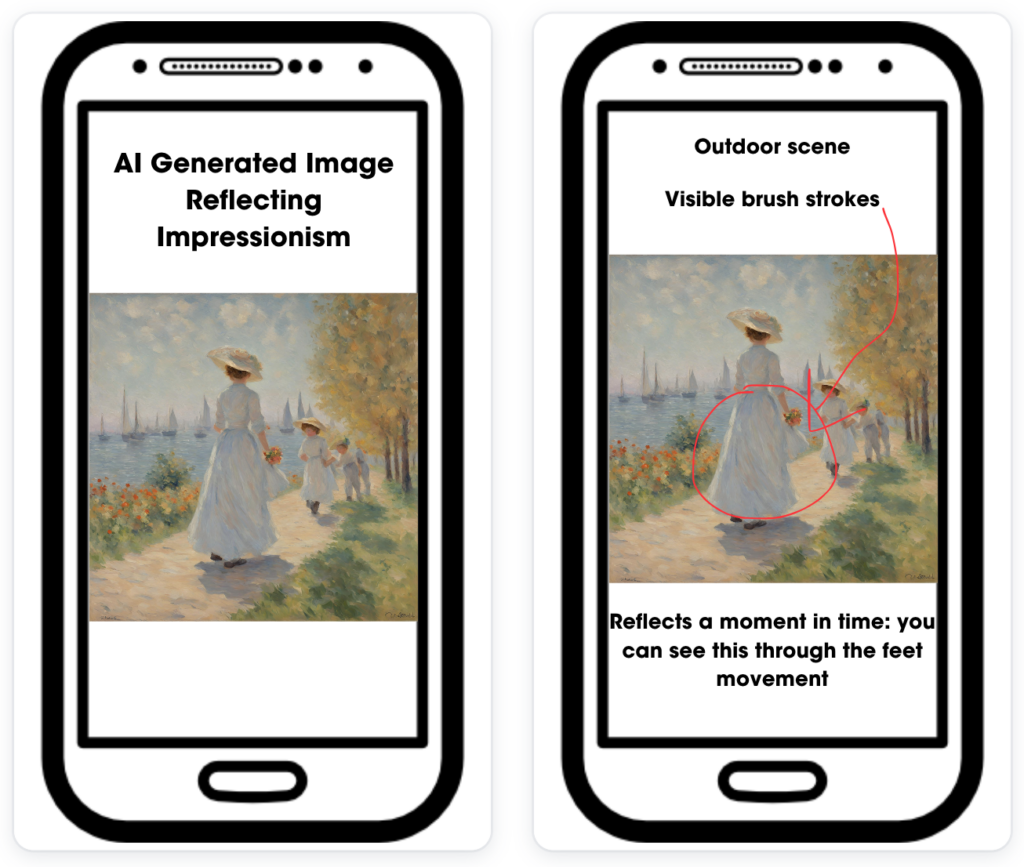
Snaps are the output of the app called Snapchat. Snaps can be images or videos, which makes it easy to integrate them into many learning outcomes easy. There is almost always text, images, annotations/drawings, and stickers over the top of the image or video.
While it is possible for students to seek answers from an AI chatbot regarding the identifying characteristics of art from the Impressionist movement, the true essence of this assessment lies in their ability to comprehend and synthesize that information into an authentic creation. Through original thought and creative expression, students engage in the process of crafting a unique final product. Adding annotations is key to ensuring the thinking is student-generated and one reason why Snaps are a great format for modern assessments.
This is also a great example of how we can collaborate with AI. It’s our new world, and collaborating with AI both in and out of the classroom is a skill students must learn.
Tools for Creating Student Snaps
I recommend three tools for creating school-friendly Snaps:
For older students:
- Canva for Education
- A slides tool, such as Google Slides or Microsoft PowerPoint
For younger kiddos:
Canva for Education
Among the numerous tools available for student creation, Canva for Education stands out as a top choice. I have even created a Canva Snap template to make it as easy as possible. Simply copy the template or share this template directly with students. Then, add your own content.
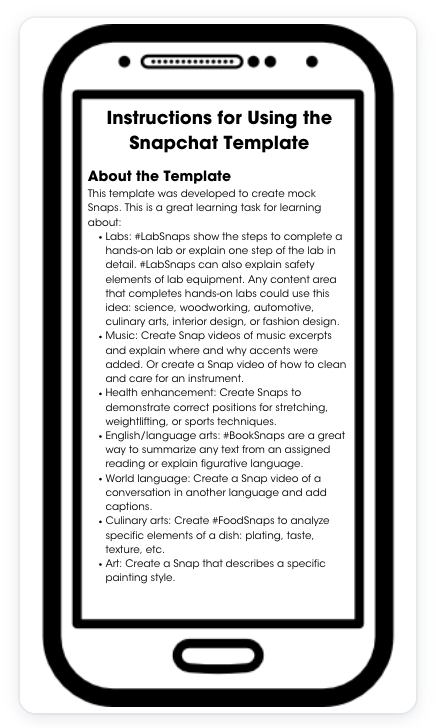
Additionally, you can easily recreate the Snap template in Adobe Express.
Google Slides or Microsoft PowerPoint
Yes, you can create so much more than slideshows in Google Slides and PowerPoint! Use this slides Snap template. If you would like it in Microsoft PowerPoint form go to File>Download>Microsoft PowerPoint.
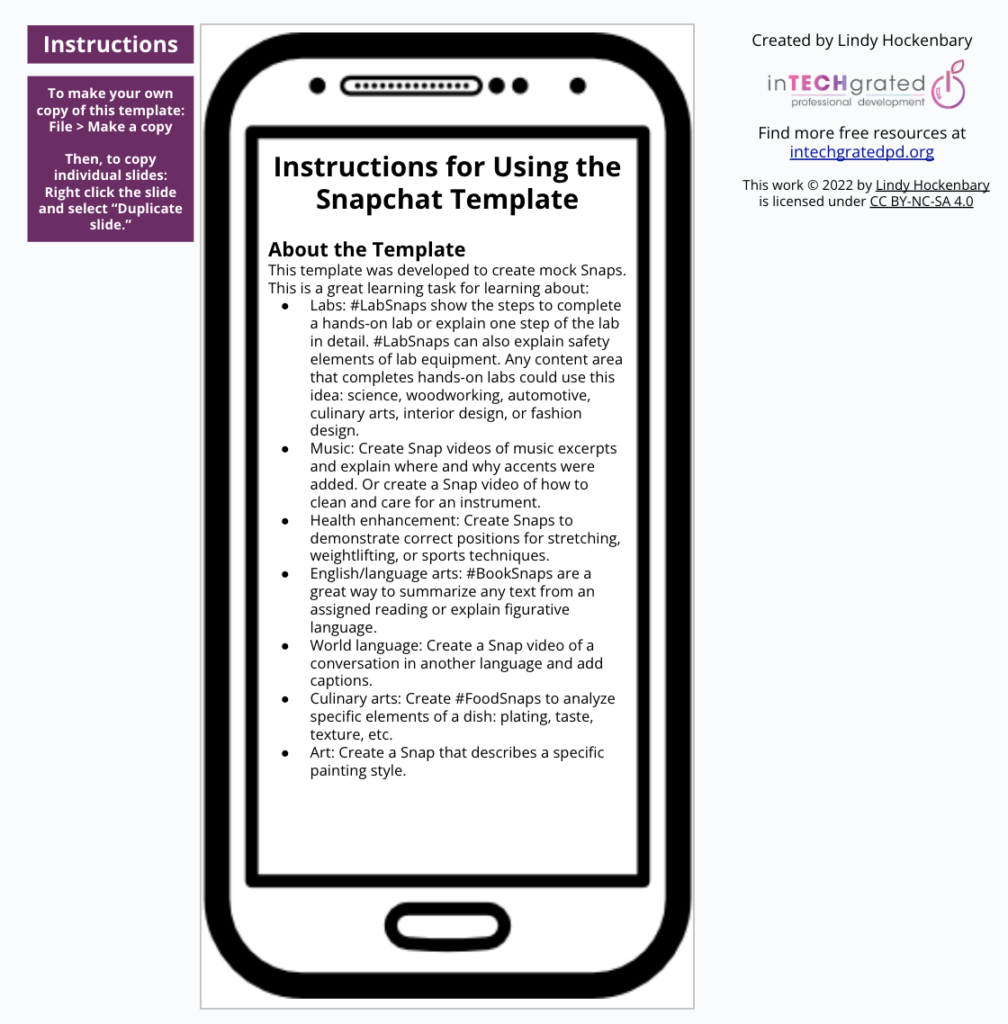
Book Creator

This is the best option for younger students. Use the “portrait” style book to get the “look” of a Snap. Then, each page of the book becomes one Snap.
Snapchat Videos
Adding student voice via a Snap video even further ensures integrity and comprehension of assessments. You can create Snapchat videos directly in Canva. Canva has a screen record feature that will allow students to add their voice over the Snap. Book Creator offers an integrated screen recorder feature as well for easy addition of student voice. For slide creations, use a screencasting tool such as ScreenPal or Screencastify.
Single Point Rubrics for Modern Assessments
I often receive the question: “These modern assessments sound great, but how do I assess them?” The answer is simple: single point rubrics! Well, the answer is really rubrics, but I am particularly fond of single point rubrics. A single point rubric includes a single column that indicates expectations for proficiency. Here is an example single point rubric for the impressionist art Snap assessment:
| Areas for Improvement | Criteria for Proficiency | Areas That Exceed Expectations |
| Provides at least three clear examples of Impressionist art. | ||
| Uses the three examples to accurately identify the characteristics of Impressionist art. | ||
| Creates an image using an AI generator that clearly exemplifies Impressionist characteristics. | ||
| Provides a clear explanation of how the AI-generated image showcases the characteristics of Impressionism. | ||
| The AI-generated image is appropriately labeled, indicating it was generated by AI. |
There are many benefits to using a single-point rubric over other rubric types:
- Less text
- Easier for students to read
- Easier for students to find expectations
- Easier and faster for teachers to make
- Easier and faster for teachers to provide feedback
Have a generative AI tool, such as ChatGPT, help you create single-point rubrics for your modern assessments. This example rubric was generated by ChatGPT when I used this prompt:
Please create a single point rubric for this assessment: <enter assessment instructions<.
More Snap Ideas
- Labs: #LabSnaps show the steps to complete a hands-on lab or explain one step of the lab in detail. #LabSnaps can also explain the safety elements of lab equipment. Any content area that completes hands-on labs could use this idea: science, woodworking, automotive, culinary arts, interior design, or fashion design.
- Music: Create Snap videos of music excerpts and explain where and why accents were added. Or create a Snap video of how to clean and care for an instrument.
- Health: Create Snaps to demonstrate correct positions for stretching, weightlifting, or sports techniques.
- English/Language arts: #BookSnaps are a great way to summarize any text from an assigned reading or explain figurative language. The annotations and audio components will ensure the summaries are in the students’ words.
- World languages: Create a Snap video of a conversation in another language and add captions.
- Culinary arts: Create #FoodSnaps to analyze specific elements of a dish: plating, taste, texture, etc.
I hope this article sparked ideas for using Snaps with your students to assess their learning and put their critical thinking, creativity, and problem-solving skills to use. How will you get started with modern assessments in your classroom?
Article Summary by ChatGPT
In response to AI’s capability to ace traditional assessments, the blog introduces “modern assessments” that prioritize critical thinking and creativity, making them resistant to AI replication. These assessments require students to synthesize information into multimedia products, exemplified by the “Snaps” task where students explain Impressionist art characteristics. Tools like Canva, Google Slides, and PowerPoint are recommended for creating these assessments. To ensure authenticity, students can reflect via screencast videos.
Learn more from Lindy, along with thousands of other educators, at TCEA’s 2024 Convention & Exposition! She will present seven sessions, two of which dive deeper into AI. Don’t miss Lindy as she leads If You Can’t Beat AI, Challenge AI: The Human Advantage and AI-mazing Modern Assessments. Not into AI? There are hundreds of sessions to choose from on topics like digital tools for learning, research and best practices, and more.

